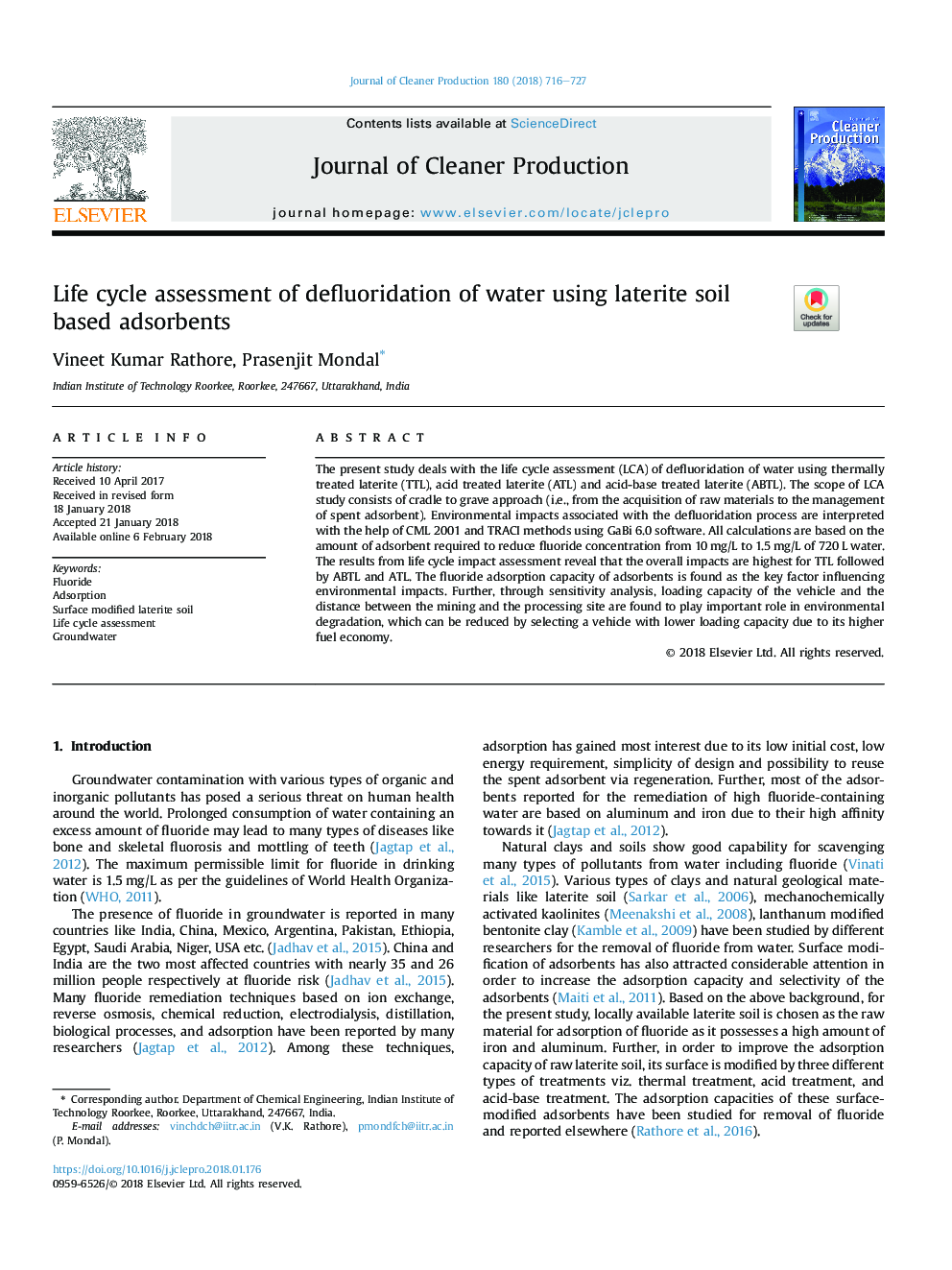| Article ID | Journal | Published Year | Pages | File Type |
|---|---|---|---|---|
| 8098064 | Journal of Cleaner Production | 2018 | 12 Pages |
Abstract
The present study deals with the life cycle assessment (LCA) of defluoridation of water using thermally treated laterite (TTL), acid treated laterite (ATL) and acid-base treated laterite (ABTL). The scope of LCA study consists of cradle to grave approach (i.e., from the acquisition of raw materials to the management of spent adsorbent). Environmental impacts associated with the defluoridation process are interpreted with the help of CML 2001 and TRACI methods using GaBi 6.0 software. All calculations are based on the amount of adsorbent required to reduce fluoride concentration from 10â¯mg/L to 1.5â¯mg/L of 720â¯L water. The results from life cycle impact assessment reveal that the overall impacts are highest for TTL followed by ABTL and ATL. The fluoride adsorption capacity of adsorbents is found as the key factor influencing environmental impacts. Further, through sensitivity analysis, loading capacity of the vehicle and the distance between the mining and the processing site are found to play important role in environmental degradation, which can be reduced by selecting a vehicle with lower loading capacity due to its higher fuel economy.
Related Topics
Physical Sciences and Engineering
Energy
Renewable Energy, Sustainability and the Environment
Authors
Vineet Kumar Rathore, Prasenjit Mondal,
